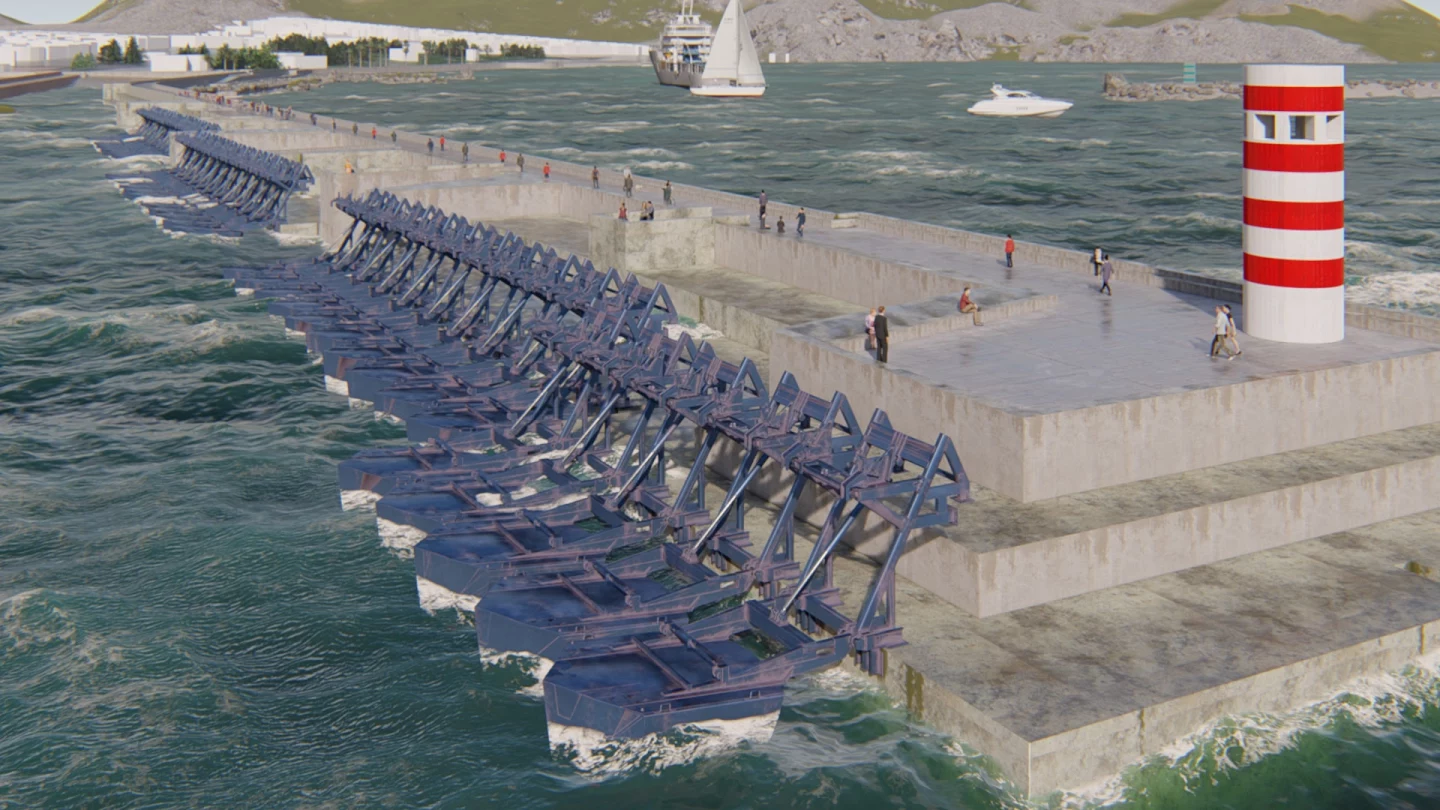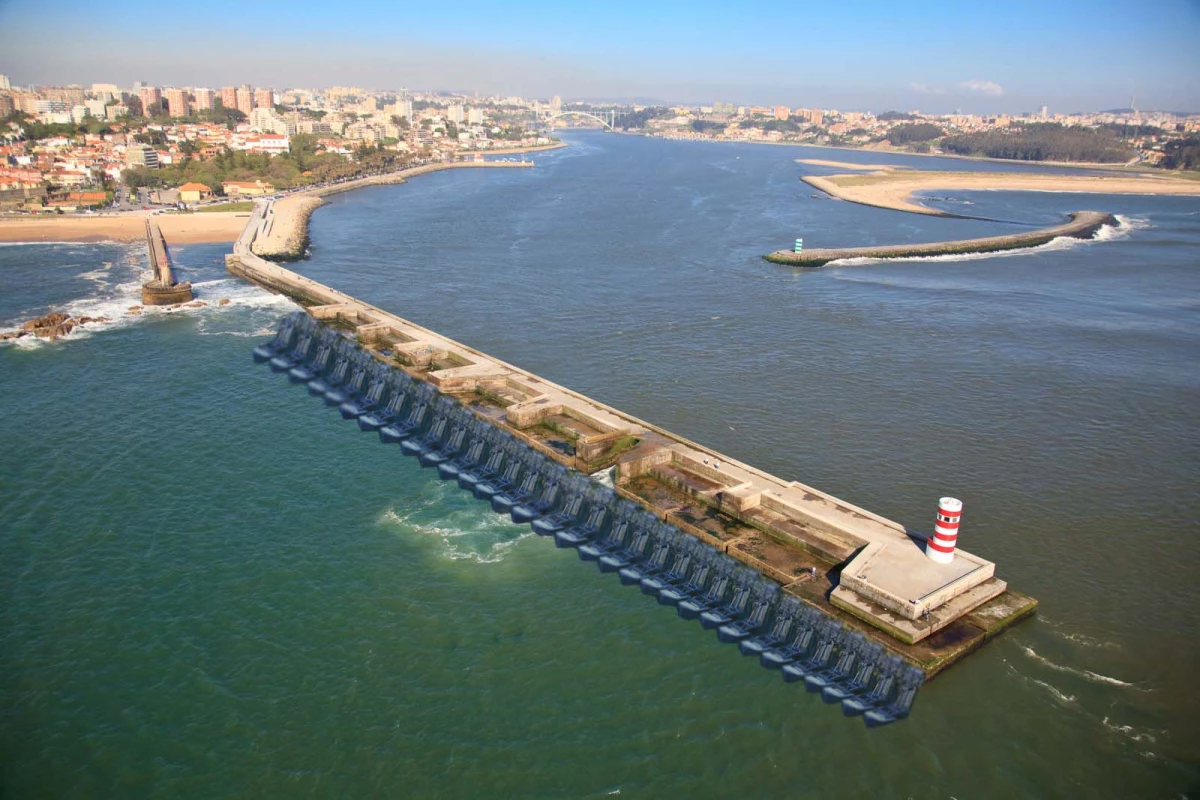Eco Wave Power has been floating its wave energy system for more than 10 years, where the rise and fall of coastal waters drives hydraulic pistons that run a generator to produce electricity. Now the company is getting ready to build its first megawatt installation.
We've been following the progress of Eco Wave Power's journey to tap into the movement of coastal waters and generate electricity since early prototypes were tested in tanks back in 2012.
Though the system has been through a number of tweaks over the years, the basics are still the same. Floaters attached to a sea wall or other coastal infrastructure rise and fall with the motion of waves, which moves fluid to a land-based accumulator via the action of hydraulic pistons. Compressed hydraulic fluid is then released and drives an electric generator to produce electricity.

The setup can operate around the clock, but if conditions get too choppy the floats can be raised until the storm passes. Installation and maintenance should be relatively simple, and connection to power grids can be undertaken without laying miles of undersea cabling.
Gibraltar became the first grid-connected Eco Wave Power setup in 2016, which ran for six years before its component parts were recovered, overhauled (or recycled) and shipped to the Port of Los Angeles in the US for a demonstration project. Another installation at Jaffa Port in Israel was connected to the grid last year. The company has inked a number of deals around the world in recent years, the largest for a 77-MW wave energy station in Turkey.
However, the honors for the first megawatt-scale project to be built looks set to go to the city of Porto in northern Portugal. Though announced back in 2020, approval for construction to commence was only granted in March of this year. Now Eco Wave Power founder and CEO, Inna Bravermann, and company engineers have met with key players "for the official kickoff" of its first commercial-sized project.

The site of the first 1-MW station will also host a "first-of-its-kind wave energy museum and education center" in the space underneath the breakwater, which will be open to the public. This space will house much of the Eco Wave Power's equipment as well. Construction is expected to begin within the next two years, followed by expansion over four locations up to a maximum capacity of 20 megawatts.
"We believe that this will be the first wave energy project in the world to show significant energy production from the power of the waves," said Bravermann. "I truly believe that this revolutionary project will position Eco Wave Power as a leading wave energy developer and serve as a significant milestone towards the commercialization of our wave energy technology globally."
Source: Eco Wave Power






